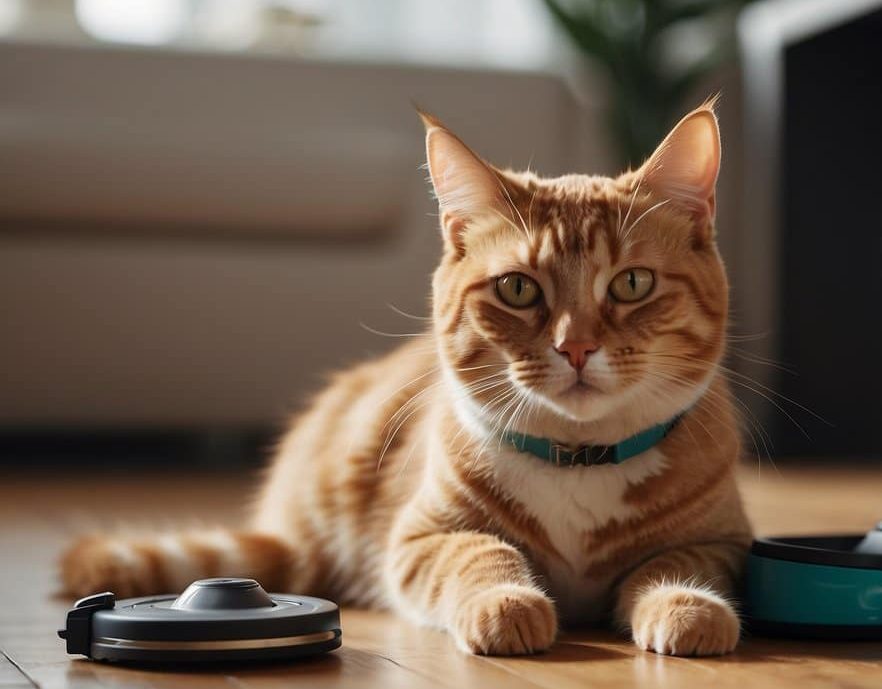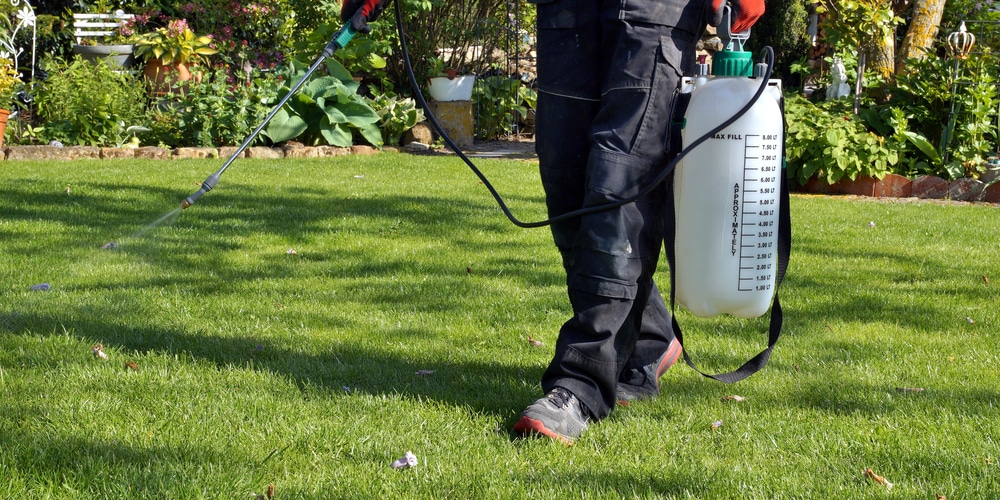Getting Rid of Fleas: A Logical Approach
Step 1: Identify the Infestation
- Question: Have you seen fleas on your pets or around your home?
- Yes: Move to Step 2.
- No: Monitor your pets and home for a few days.
Step 2: Start Treatment for Pets
- Question: Are your pets treated for fleas?
- Yes: Ensure treatment is up-to-date and effective. Consider consulting a vet for alternative treatments.
- No: Treat pets with a vet-recommended flea treatment.
- Options: Topical treatments, oral medications, flea collars.
Step 3: Clean the Home
- Action: Thoroughly clean the house.
- Clean Pet Areas: Wash pet bedding and clean areas where pets spend time.
- Vacuum: Regularly vacuum carpets, floors, and furniture.
- Steam Clean: Consider steam cleaning carpets and furniture if infestation is severe.
Step 4: Use Environmental Flea Control
- Question: Do you want to use chemical or natural methods?
- Chemical: Use flea sprays and insecticides as per manufacturer’s instructions. Target floors, pet areas, and dark corners.
- Natural: Use diatomaceous earth or boric acid powder in areas where pets frequent.
- Note: Always ensure products are pet-safe.
Step 5: Prevent Future Infestations
- Routine Care: Keep up with regular flea treatment for pets.
- Maintain Cleanliness: Regular cleaning and vacuuming of the home.
- Monitor: Check pets and home regularly for signs of flea activity.
Step 6: Evaluate and Adapt
- Question: Are fleas still present after 2-4 weeks?
- Yes: Reassess methods used, possibly consult a pest control professional.
- No: Continue prevention practices to keep home flea-free.
Additional Tips
- Be consistent with prevention practices to minimize the risk of re-infestation.
- Consider consulting with a veterinarian for the best flea treatment options for your pets.
- Regularly wash and change bedding, rugs, and pet beds to destroy potential flea habitats.
Flea Identification and Behavior
Knowing how to spot a flea infestation and understanding the flea life cycle are the first steps in the battle against these pesky critters.
Spotting Flea Infestations
- Check Your Pets: Your furry friend might be scratching more than usual, a first sign of fleas.
- Look closely at their skin and fur for tiny, dark, quick-moving insects.
- Inspect Your Home: Fleas can infest carpets, bedding, and furniture.
- Keep an eye out for flea dirt, which looks like small, black pepper-like spots.
- Notice Flea Bites: On humans, flea bites are small, red, and sometimes occur in clusters.
- You might find them around your ankles or other areas with easy access under clothing.
Flea Life Cycle
- Eggs: Fleas lay eggs on your pet, which can fall off and spread throughout your home.
- Larvae: These eggs hatch into larvae that avoid light and feed on organic debris found in carpets, bedding, or cracks in the floor.
- Pupae: Larvae develop into pupae within silken cocoons.
- They can remain dormant for weeks to months, waiting for the right conditions to emerge.
- Adults: Once they sense a host through warmth or vibrations, adult fleas emerge with one mission: to feed and reproduce.
- They can start the cycle anew on your unsuspecting pet.
Preventive Strategies
Before you find yourself in a flea frenzy, let’s lock down some preemptive strikes.
By tackling fleas before they take over, you’re saving yourself a boatload of time and your pets a whole lot of scratching.
Pet Treatment Plans
- Regular Flea Medication: Sticking to a schedule with flea preventatives is as crucial as your morning coffee.
- Whether it’s topical treatments or chewable tablets, keeping your pets up-to-date is your first line of defense.
- Year-Round Protection: Fleas don’t take the winter off, so neither should you.
- Maintain your pet’s flea treatment plan throughout all seasons.
Environmental Controls
- Frequent Cleaning: An ounce of prevention is worth a pound of cure.
- By vacuuming carpets and furniture regularly, you make your home less inviting to these pesky pests.
- Outdoor Maintenance: Your yard is the welcome mat for fleas.
- Keeping your grass trimmed and hedges pruned can discourage wildlife from bringing fleas near your home.
- Prompt Laundering: After outdoor adventures, wash pet bedding and your own clothing to destroy any flea stowaways.
- Hot, soapy water is your ally in this battle.
Natural Remedies and Solutions
Embarking on a chemical-free battle against fleas can not only be kinder to the environment but also safer for your furry friends.
Check out these natural flea fighters that pack a punch without harsh chemicals.
DIY Flea Repellents
You don’t have to look far to concoct effective flea repellents right from your pantry or garden. Grab these ingredients and get mixing!
- Lemon Spray: Citrus is a flea’s nightmare.Simply slice a lemon thinly, add to a pint of water, and bring to a boil.
Let the mixture steep overnight and pour into a spray bottle.
Apply to affected areas, but be mindful of pets’ sensitivity to citrus.
- Essential Oils: Some essential oils are known to repel fleas.Combine a few drops of lavender or tea tree oil with water or a carrier oil, and apply sparingly on fabrics and pet bedding.
Always check that the oils are safe for pets.
Home Remedies for Pets
Your pet is the frontline in the flea fight, so arm them with nature’s best defenses.
Always consult with your vet before using any new remedy on your pet.
- Flea Comb: This tool is a must-have for natural flea management.Use daily to comb through your pet’s fur, dipping it into hot soapy water to eliminate any captured fleas.
- Natural Shampoos: Bathe your pet with a mild shampoo mixed with a bit of apple cider vinegar, a natural flea deterrent.Not only does it keep fleas at bay, but it can also give your pet a shiny coat.
Chemical Solutions
When tackling a flea infestation, sometimes you’ve got to bring out the big guns. Chemical solutions can be fast-acting and effective when used correctly.
Let’s get down to business and explore the options at your disposal.
Insecticides and Sprays
- Seek out products with IGRs: Insect Growth Regulators (IGRs) are your secret weapon in flea warfare.
- These chemicals mess with fleas’ life cycles, preventing them from becoming breeding adults.
- Know your active ingredients: Look for sprays containing pyrethroids or imidacloprid, as they are potent against adult fleas.
- Just make sure to follow the usage instructions to the letter to keep your home safe.
Oral and Topical Treatments for Pets
- Topical applications: Drop-based medications like fipronil or selamectin can be applied directly onto your pet’s skin, usually between their shoulder blades.
- Pills can pack a punch: Oral medications might come in handy if your pet is not a fan of topical treatments.Many of these are chewable and act fast to kill adult fleas by targeting their nervous systems.
Professional Flea Control
When fleas have taken over your space, going pro can be your best bet. Let’s explore your options for professional help with flea management.
Hiring a Pest Control Service
- Research: Start with a thorough online search to find a reputable pest control service.
- Reach out: Contact a few services to discuss your flea infestation and ask for estimates.
- Credentials: Ensure they have the proper licensing and good reviews from past clients.
What to Expect From Professionals
- Assessment: Experts conduct a detailed inspection to identify the scale of the infestation.
- Treatment Plan: They tailor a specific plan for your situation, which often includes:
- Chemical treatments using insecticides.
- Recommendations for ongoing flea management and prevention.
- Follow-up: Expect a scheduled follow-up visit to ensure fleas have not returned.
Frequently Asked Questions
Navigating through a flea invasion can be tricky, but with the right methods, you can declare victory over these pesky jumpers. Let’s tackle some common questions to arm you with the knowledge needed for your battle against fleas.
What home remedies can repel fleas effectively from pets?
To give fleas the boot from your furry friends, try a flea comb dipped in a mixture of water and lemon juice after a good bath.
Frequent vacuuming and laundering pet bedding also create an unfriendly environment for these critters.
What methods work best for removing fleas from humans?
If you’re finding fleas taking a liking to you, thorough showering with soap is key. Focus on scrubbing areas where fleas might hide, and launder your clothing and bedding in hot water to eliminate any that might be hanging on.
Which steps are essential for eliminating fleas in the household environment?
For a flea-free abode, your to-do list should include:
- Vacuuming flooring, furniture, and any areas your pet frequents thoroughly and regularly.
- Washing all bedding, including your pet’s, in hot water.
- Applying diatomaceous earth, a non-toxic dust, on carpets and pet sleeping quarters to dry out any flea larvae.
Can fleas be eradicated from a home quickly using natural solutions?
Quick? Perhaps not lightning-fast, but natural solutions like salt, baking soda, and vinegar can dehydrate and eliminate fleas over time when used consistently.
What is the fastest way to eliminate a flea infestation from a cat?
Cats might hate baths, but a swift flea shampoo followed by a meticulous combing with a flea comb should get rid of those pesky fleas in a hurry.
Consult your vet for the best flea treatment products for a quick knockout.
How long typically does it take to completely rid a home of fleas?
Patience, grasshopper! Eradicating every flea from your home can take from a couple of weeks to a month or so.
The time it takes depends on the severity of the infestation and rigor of your treatment plan. Don’t forget to treat your pets concurrently to prevent a repeat invasion.
Last update on 2025-06-06 / Affiliate links / Images from Amazon Product Advertising API







